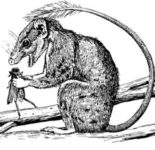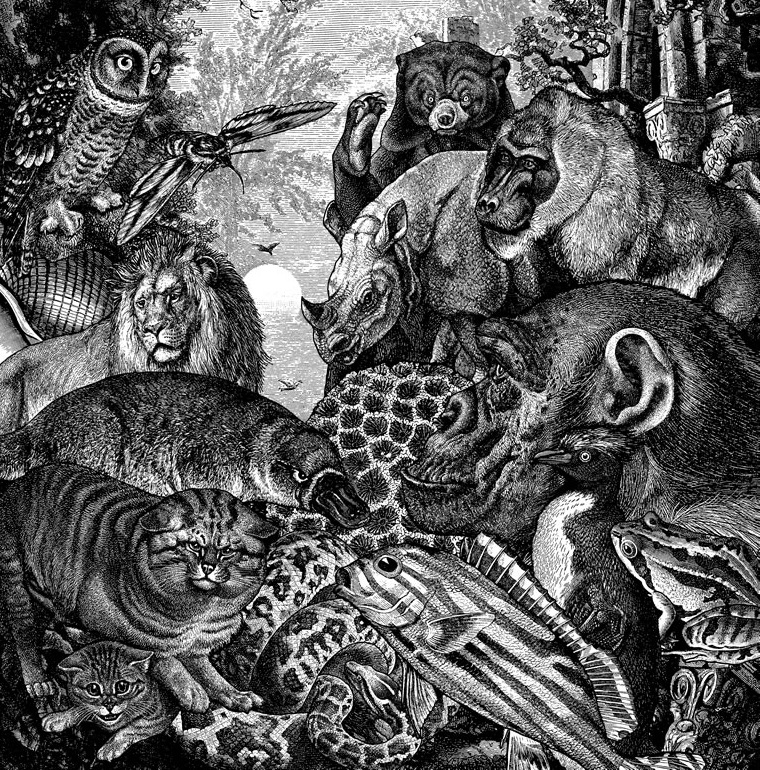This article is for listing animal strategies, habits and behaviors that make little stories like anecdotes. These are interesting and you hear them told sometimes. They’re like the animal sociobiology version of the cocktail party anecdote. If you know one please add it to the comments (When I get a chance, I’ll add the ones in the comments to the main page, along with credit to the person who shared the story).
A young moose passes through two crises during the period of declining dependence on its mother. The first is in the spring, when it is one year old and its mother has just given birth to a new calf. The  dam suddenly turns hostile and drives the yearling from her territory. The young moose lingers in the immediate vicinity and repeatedly attempts to return to the dam. In the fall, at the onset of the rutting season, the territorial barriers relax and the yearling is able to draw close to its mother again. But this new proximity precipitates the second crisis. Dams now treat their daughters as rivals, while bulls chase away the young males as if they were adults. At this stage the young animal finally becomes independent of its mother (Margaret Altmann, 1958, from A.O. Wilson’s Sociobiology).
dam suddenly turns hostile and drives the yearling from her territory. The young moose lingers in the immediate vicinity and repeatedly attempts to return to the dam. In the fall, at the onset of the rutting season, the territorial barriers relax and the yearling is able to draw close to its mother again. But this new proximity precipitates the second crisis. Dams now treat their daughters as rivals, while bulls chase away the young males as if they were adults. At this stage the young animal finally becomes independent of its mother (Margaret Altmann, 1958, from A.O. Wilson’s Sociobiology).
 The stingless bees (Meliponini) seal their eggs in waxen brood chambers and have no interaction with the developing young until they emerge as full adults, ready to go to work (A.O. Wilson’s Sociobiology).
The stingless bees (Meliponini) seal their eggs in waxen brood chambers and have no interaction with the developing young until they emerge as full adults, ready to go to work (A.O. Wilson’s Sociobiology).
Sexual pair bonding is strong in the tree shrew, and the male marks both the cage and his mate with scent. The male and female sleep together in a nest that is constructed mostly by the male.When the female becomes pregnant she builds a second nest, in which she later bears her young. The litter size is typically two. The mother soon leaves the helpless infants and returns to the first nest to rejoin the male. Thereafter, she visits the nursery only every 48 hours. The infants move  from one of her six nipples to another in an unsystematic way. After a few minutes the mother shakes them off and runs away. The young are left to groom themselves and, presumably, to clean out their own feces. The adults do not retrieve them when they are left outside the nest, and the infants do not utter distress calls. Parents forced to remain too close to their young often kill and eat them. When they are about 33 days old, the young tree shrews start emerging from their nest for short foraging trips, and the rhythm of maternal visits begins gradually to break down. At first the young return to their own nest at night and whenever they are frightened, but after 3 days they shift to the parental nest. Sexual maturity is reached at about 90 days of age. Afterward the young evidently scatter to find mates and territories of their own (A.O. Wilson’s Sociobiology).
from one of her six nipples to another in an unsystematic way. After a few minutes the mother shakes them off and runs away. The young are left to groom themselves and, presumably, to clean out their own feces. The adults do not retrieve them when they are left outside the nest, and the infants do not utter distress calls. Parents forced to remain too close to their young often kill and eat them. When they are about 33 days old, the young tree shrews start emerging from their nest for short foraging trips, and the rhythm of maternal visits begins gradually to break down. At first the young return to their own nest at night and whenever they are frightened, but after 3 days they shift to the parental nest. Sexual maturity is reached at about 90 days of age. Afterward the young evidently scatter to find mates and territories of their own (A.O. Wilson’s Sociobiology).
 " >
" >


